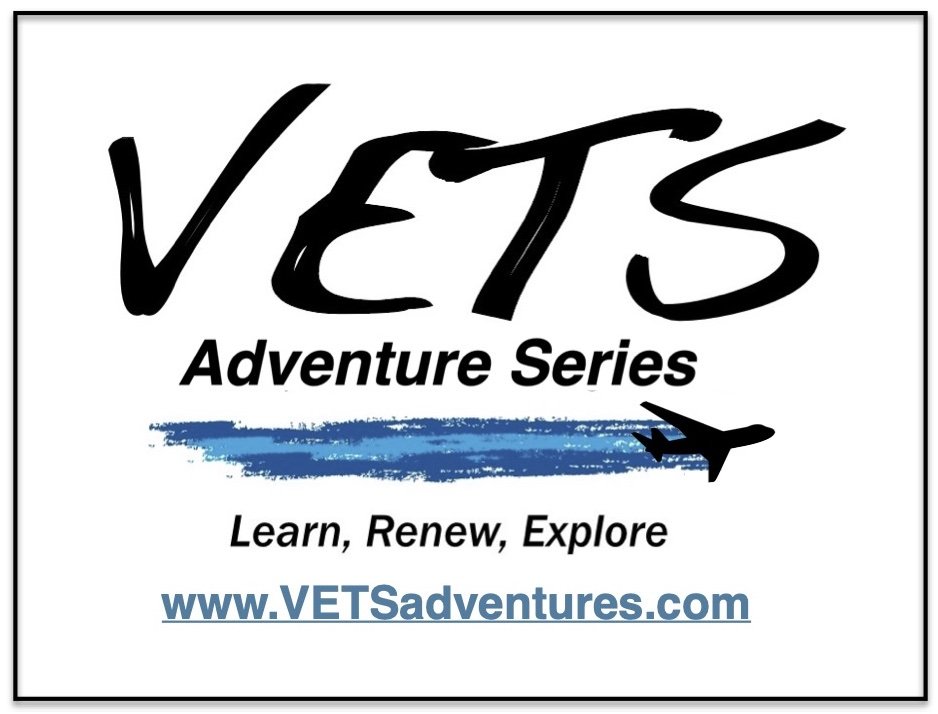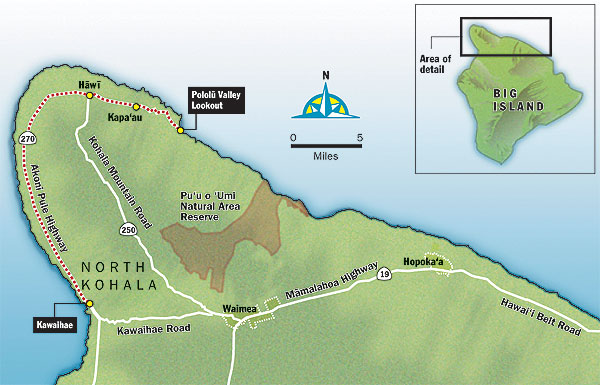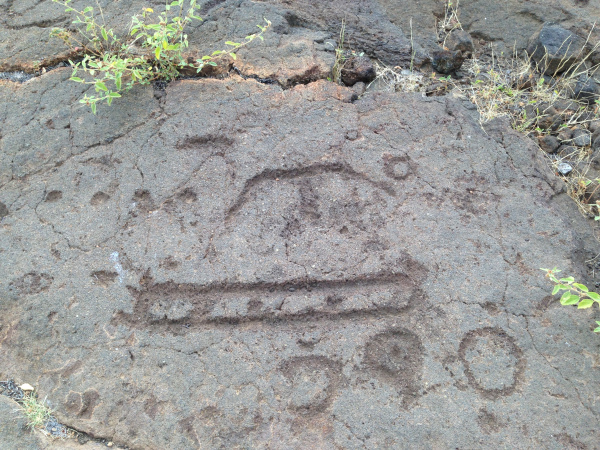The Essence of Ireland & ScotlandJuly 1 to July 13, 2020
Registration NOW OPEN for VETS Adventure Travel to Ireland & Scotland, July 2020
The Essence of Ireland & Scotland
July 1 to July 13, 2020
Itinerary
Join VETS for an adventure focused on touring Ireland and Scotland. Our itinerary will allow you to see some of the “Best Of” these two amazing nations while experiencing the unique History, People and Places. You will be earning up to 12 units of RACE-approved continuing education credit (see the very bottom of this page) while traveling with fellow veterinarians, their families and friends. This itinerary may be modified slightly during our trip in order to pursue opportunities that could enhance our experience!
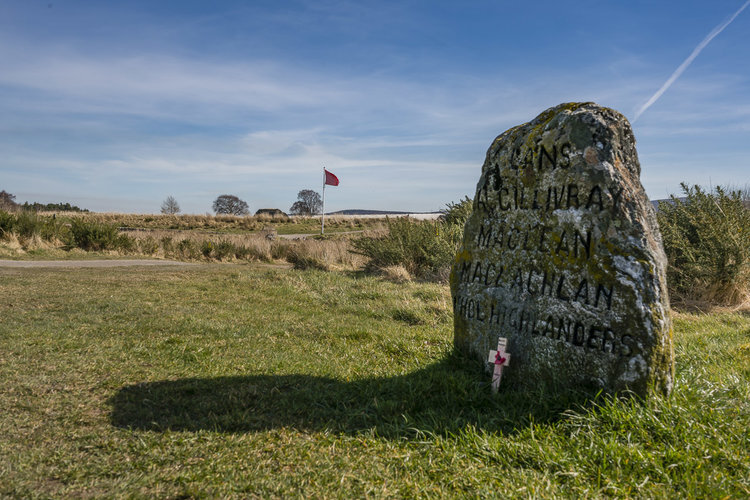

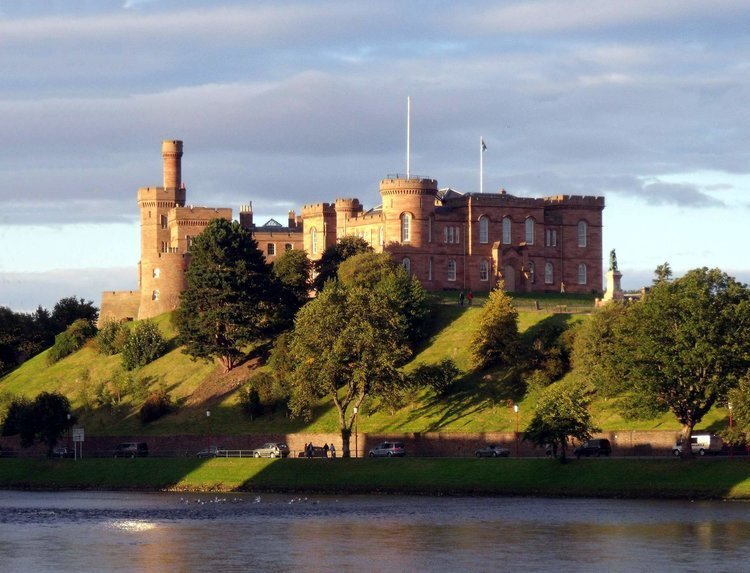
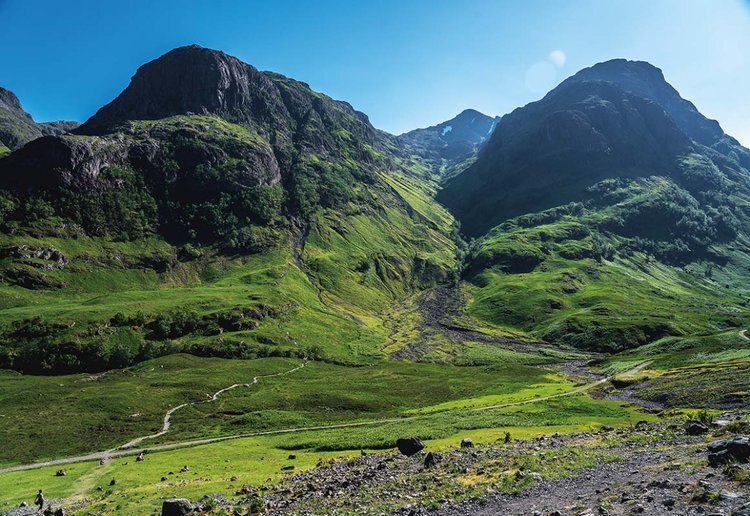

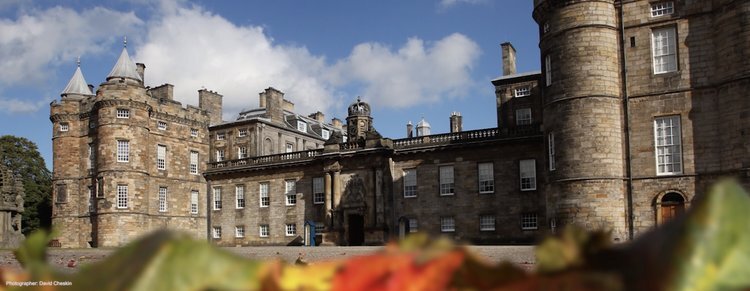

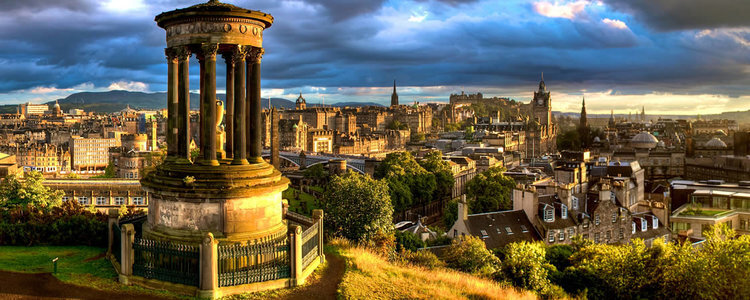

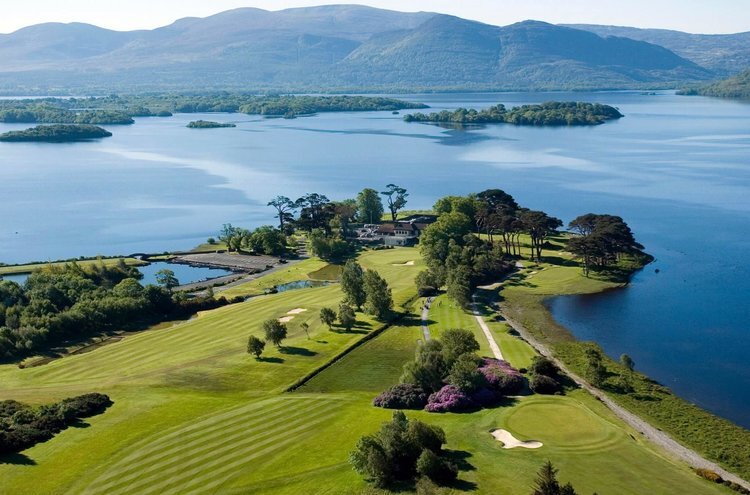

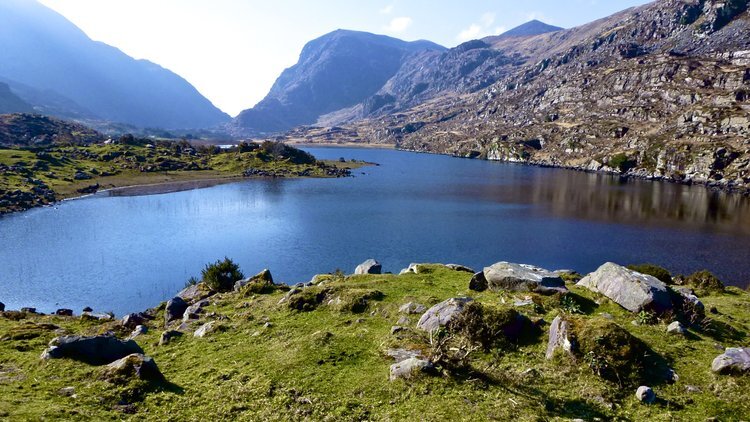
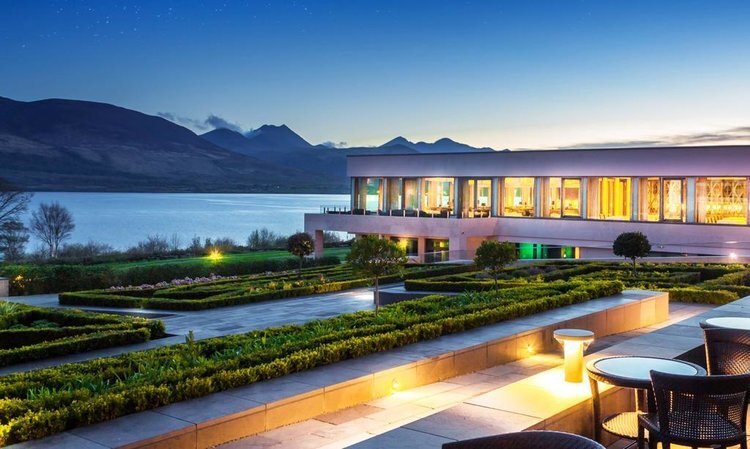
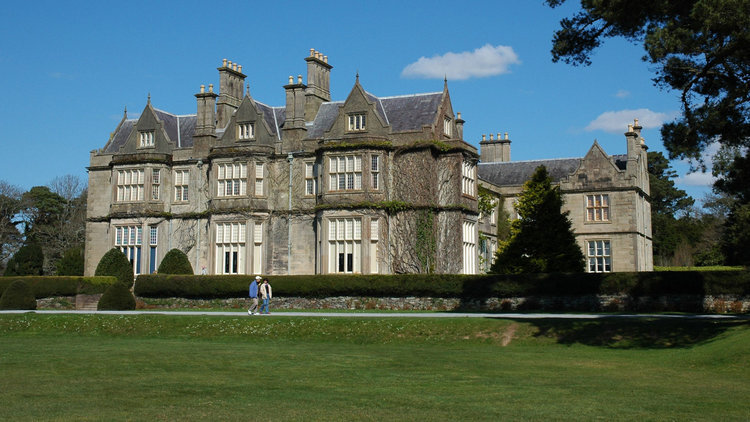
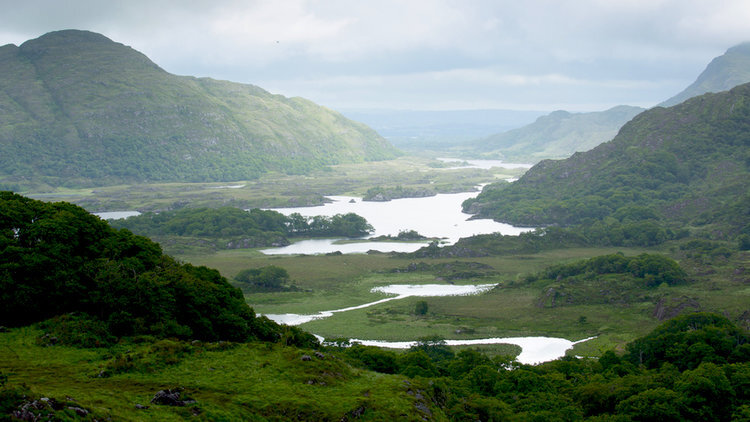
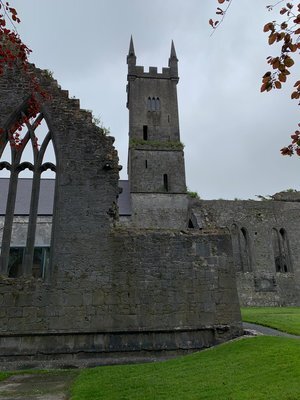
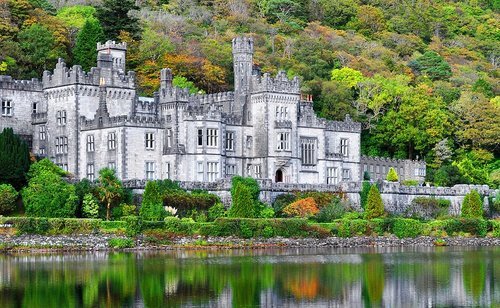
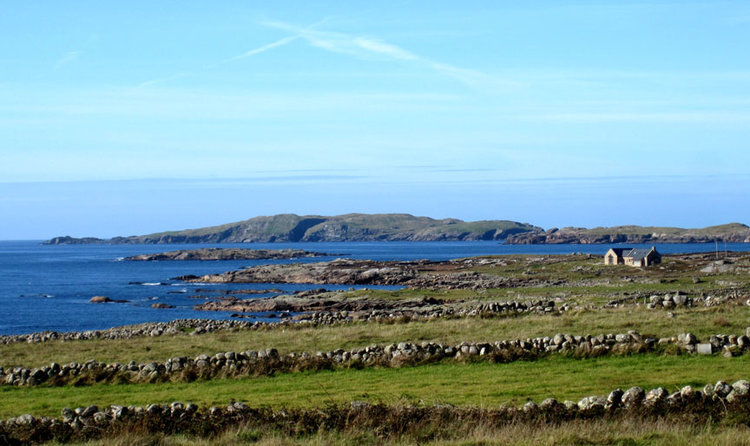


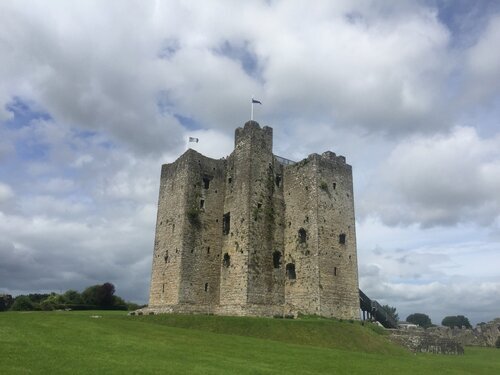

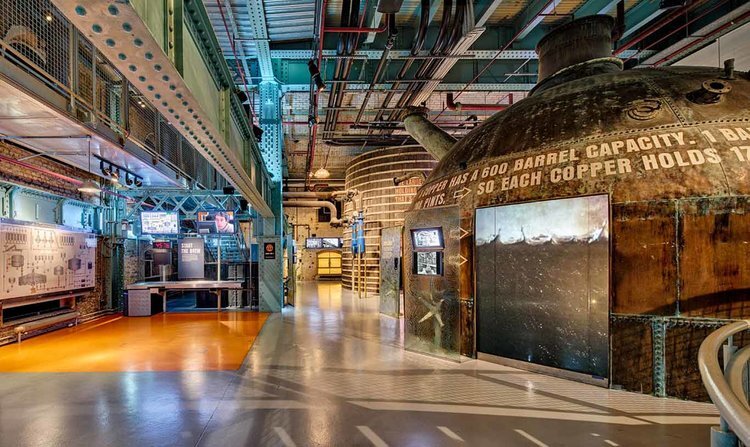

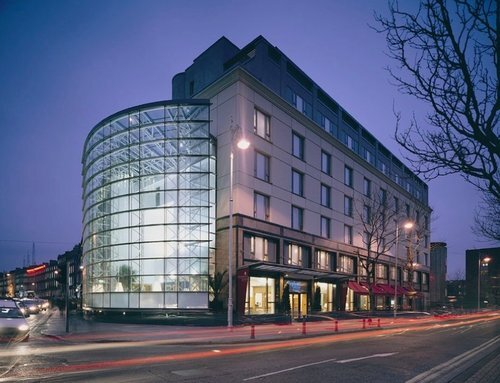
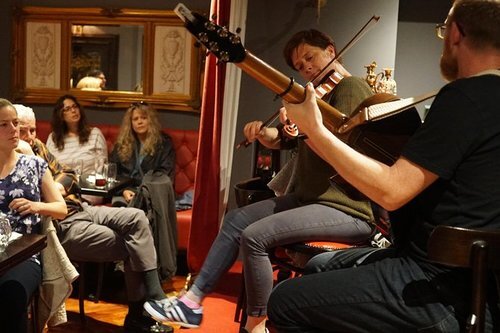

Day 0— July 1, 2020, Wednesday — Depart the USA for a July 2 (Thursday) arrival in Dublin
Day 1— July 2, 2020, Thursday — Arrive in Dublin, Welcome Banquet
Many pubs have nightly entertainment from local talent!
Depart from North America on July 1st, arriving in Dublin, Ireland on July 2nd!
Morning arrival from North America to Dublin, a busy city founded in the 9th century on the River Liffy. At the most recent census, about 2 million of Ireland’s total population of 4.7 million live in the immediate area of Dublin.
You’ll be met at the airport and transferred to The Green Hotel, a luxury hotel in the center of Dublin and easy walking distance to the most interesting areas (e.g. one idea of where to go . . . there are > 1,000 pubs in Dublin!)
A light lunch will be provided at the hotel, afternoon on your own.
Afternoon Check-in.
Late Afternoon: Depart for Book of Kells & Trinity College.
This evening you’ll be our guest at Trinity College (founded in 1592) for a visit to the Book of Kells, their historical library known as The Long Room and a Welcome Banquet in ‘Great Hall.’
Historic Trinity College
The Illuminated Manuscript of The Book of Kells
After Dinner, we’ll provide transportation back to The Green Hotel.
Day 2— July 3, Friday — CE Lectures, Old Jameson’s Distillery, St. Patrick’s Cathedral, The Guinness Storehouse, Literary Pub Crawl (optional)
Breakfast at the hotel.
Morning departure for University College Dublin (the home of the Ireland’s national veterinary college.) We will participate in two RACE approved lectures, the first on “How Diseases are Transmitted” (think measles, Foot and Mouth Disease, African Swine Fever, etc) and a second on “How Medieval Folk Remedies Evolve to Become Modern Pharmaceuticals.”
Lunch provided after the CE Event.
Afternoon: Dublin city tour to the Old Jameson’s Distillery, St. Patrick’s Cathedral and the Guinness Storehouse.
The Guinness Storehouse.
Evening on your own or sign up for an optional guided Literary Pub Crawl and dinner. $120 per person includes Tour, Dinner & Drinks.
Overnight at the Green Hotel.
Day 3— July 4, Saturday — Newgrange & Trim Castle Visit
Breakfast at hotel.
Morning: Bus to Boyne Valley about 2 hours north of Dublin. Visit a historical area called Newgrange built before the pyramids in Egypt. Lunch will provided as part of the Newgrange trip.
We will also visit a Trim Castle.
Trim Castle, the largest Anglo-Norman castle in Ireland, was constructed over a thirty-year period by Hugh de Lacy and his son Walter. Hugh de Lacy was granted the Liberty of Meath by King Henry II in 1172 in an attempt to curb the expansionist policies of Richard de Clare, (Strongbow). Construction of the massive three storied Keep, the central stronghold of the castle, was begun c. 1176 on the site of an earlier wooden fortress. This massive twenty-sided tower, which is cruciform in shape, was protected by a ditch, curtain wall and moat.
Return to Dublin.
Evening at leisure.
Overnight at the Green Hotel.
Day 4— July 5, Sunday — County Clare, Bunratty Castle, Cliffs of Moher, Dinner Banquet with Irish Entertainment
Breakfast at hotel
Morning: Depart to bus to County Clare, with a visit to Bunratty Castle and Folk Park, a residential castle built ~1425 as a defensive fortress for a family (there are other castles such as Dublin Castle that were built to protect governments/kings/etc.). The Folk Park is part of the castle grounds and has reconstructed typical housing with period furniture representing how the Irish lived.
Lunch provided.
We’ll drive to the Cliffs of Moher, famous sea cliffs that are as high as 700 feet above the Atlantic Ocean and look out over the Aran Islands and Galway Bay.
Next we’ll drive through The Burren, about 200 square miles of land dominated by limestone formations and what was home to many early civilizations. This area was hit especially hard by the Great Famine and Black Death in the early 1300’s.
Limestone formations of The Burren
We’ll continue to the Inn at Dromoland, our hotel adjacent to Dromoland castle and on the original castle grounds.
This evening we’ll host a dinner at Durty Nellys, an authentic pub close to Bunratty Castle and enjoy some fine pub food as well as Irish entertainment.
Overnight at the Inn at Dromoland Castle.
Day 5— July 6, Monday — Connemara Peninsula, Kylemore Abbey, Town of Ennis
Breakfast at the Inn at Dromoland.
Morning: We’ll depart for the Connemara peninsula and visit Kylemore Abbey. This is one of the most photographed abbey’s in the world and we’ll take a tour!
Lunch provided.
Return to our hotel at The Inn at Dromoland.
Afternoon at leisure.
Evening at leisure with bus service to the little town of Ennis, that we fell in love with on our last trip. It’s not too far away and plan on heading there to walk around, visit an ancient Friary, and eat in at local pub (hopefully with music).
Dinner on your own in Ennis or it will also available at the Inn or make reservations at Dromoland Castle (5 star restaurant-we recommend you make dinner reservations before you leave to go to Ireland).
Day 6— July 7, Tuesday — The Mini-Ring of Kerry, Killarney, Dinner Banquet with Irish Entertainment
Breakfast at the Inn at Dromoland.
The region of Kenmare is part of the “Mini-Ring of Kerry”
Morning: We’ll continue our adventure by heading south, crossing from County Clare to County Kerry by ferry boat, and head to the small city of Kenmare as part of “The Mini Ring of Kerry.” We’ll enjoy lunch in Kenmare, then continue up through Moll’s Gap and Ladies View with a stop at Muckross house (a 2018 “Traveler’s Choice on TripAdvisor), a restored home and gardens just east of Killarney.
The Muckross house
We’ll head to our hotel, Europe Hotel.
The Europe Hotel with views of the Lakes of Killarney
Killarney is so popular because of its location but also because the town itself is so stereotypically Irish. Plan to walk through downtown to see the storefronts.
We will host a Dinner Banquet with Entertainment at the Europe Hotel.
Overnight at the Europe Hotel.
Day 7— July 8, Wednesday — Choose Your Own Adventure!
(Choose ONLY ONE of five options below)
Breakfast at The Europe Hotel
Your free day to do what you want to do!
Options include: (You Choose ONE, please)
1) Experience a jaunting cart with a pony ride up and over the Gap of Dunloe, then have some refreshments at Lord Byron’s historical cottage on the lake, just across an ancient stone bridge from where the cart will let you off. After some refreshment you’ll get on a boat with about 10 people and make your way through three connecting lakes to Ross Fort. You’ll be picked up there and returned to the hotel. Dinner on your own. This tour costs $195 per person.
The Gap of Dunloe
or
2) Choose the incredibly beautiful tour of the Dingle Peninsula. Lunch in the town of Dingle. Dinner on your own. This tour costs $130 per person.
The Dingle Peninsula
or
3) Golf at the Killarney Golf Club. You’ll be transported there and picked up. Reservations a must before arriving in Ireland and we’ll need the information to coordinate your transport! Lunch on your own. Dinner on your own. Golf fees are $290 per person.
The Killarney Golf & Fishing Club
or
4) Choose to make use of the AMAZING Spa at The Europe Hotel. Beautiful facilities in a beautiful location. Lunch on your own. Dinner on your own.
The Spa at the Europe Hotel, Killarney
or
5) Relax, walk around Killarney town, and enjoy the Europe Hotel’s grounds. Lunch on your own. Dinner on your own.
The Europe Hotel Grounds, with Breathtaking Views
Killarney— a great place to walk & shop
Day 8— July 9, Thursday — From Ireland to Scotland, Group Dinner
Breakfast at The Europe Hotel.
Early morning: Transfer to Shannon Airport (~2 hours) to catch our late morning ~90 minute flight to Edinburgh, Scotland. Flight leaves at 10:55 am and arrives at 12:30 pm.
12:30 pm: Arrive in Edinburgh. Panoramic orientation to Edinburgh.
Afternoon: Lunch at restaurant Otro.
Late Afternoon: Check into the Kimpton Charlotte Square Hotel, perfectly positioned for our exploration.
Afternoon at leisure.
Group dinner at Howies Waterloo within walking distance from hotel.
Overnight Kimpton Charlotte Square Hotel.
Day 9— July 10, Friday — VIP Edinburgh Castle Tour, Royal Mile & Old Town, Holyrood House
Breakfast at the Kimpton Charlotte Square Hotel.
Morning: Depart hotel and arrive in time for a VIP pre-opening admission and Private Tour of Edinburgh Castle.
Late Morning: Guided tour of the Royal Mile and Old Town. Lunch on your own.
Afternoon: Visit to Holyrood House, the ceremonial home of Queen Elizabeth II. According to medieval legend, the Abbey was founded around 900 years ago in 1128 by David I of Scotland. While out hunting, the king had a vision of a stag with a glowing cross between its antlers. Seeing this as a message from God, he had an abbey built on the very same spot. 'Holy Rood', the name of the Abbey, and subsequently the Palace, means ‘Holy Cross’.
Late Afternoon: Afternoon at leisure.
Evening: Dinner and evening at Ghillie Dhu Burly Ceilidh. (Walking distance from hotel.)
Overnight Kimpton Charlotte Square Hotel
Day 10— July 11, Saturday— Inverness region, Blair Castle, Loch Ness cruise
Breakfast at the Kimpton Charlotte Square Hotel
Morning: Check out and travel toward Inverness
Late Morning: Blair Castle has been the home of the Atholl family for over seven centuries. The castle has had a diverse history, witnessing both turbulent and peaceful times, enlarged and adapted over 700 years to suit the needs of the family and style of the day. Home to politicians, soldiers, agriculturalists and entrepreneurs, the family history is brought to life against a backdrop of fine 18th century interiors and Scottish baronial architecture, in 30 rooms.
Afternoon: Lunch at Blair Castle.
Inverness Castle and the River Ness
Late Afternoon: Panoramic Orientation to Inverness. Inverness is regarded as the capital of the Highlands. Inverness lies near two important battle sites: the 11th-century battle of Blàr nam Fèinne against Norway which took place on the Aird and the 18th century Battle of Culloden which took place on Culloden Moor.
Late Afternoon: Check into the Kingsmills Hotel.
Cocktails and appetizers on a Loch Ness cruise (“Here Nessie, Nessie, Nessie.”)
Dinner on your own.
Overnight at the Kingsmills Hotel.
Day 11— July 12, Sunday— Culloden Battlefield, Group Dinner at Achnagairn Castle
Breakfast at the Kingsmills Hotel.
Visit the Culloden battlefield. The Culloden Battlefield is the historic site of the last battle to take place on British soil in 1746. This battle is frequently referred to as one of the most important for Scotland, as it marked the end of the clan system in the highlands.
Lunch and Afternoon at Leisure.
Group dinner Finale at Achnagairn Castle, a five star resort with stunning views. Embrace your inner Scot and dress the part for our final banquet— Kilt Rental for Men is $175 , Sash & Brooch Rental for Women is $50.
Overnight at the Kingsmills Hotel.
Day 12— July 13, Monday — Depart Scotland
Breakfast at the Palace Hotel.
Depart for Inverness airport to start your journey home.
Flights to London Heathrow or Amsterdam Schiphol International Airports to connect with flights home.
Trip Prices
$7250* per person (based on Double Occupancy.)
$9750* for Single Occupancy (solo traveler not sharing a room.)
$5050* for Third Person (under age 18 & traveling with ‘double occupancy’ as above)
*Prices DO NOT include airfare
About Our RACE-Approved CE—
You will earn up to 12 units of RACE approved CE credit for veterinarians attending the Essence of Ireland/Scotland trip (based on lectures, case studies and passing an open-book quiz) and have more fun than a litter of kittens.
VETS Adventure Series Visits Rwanda
In July 2018, twenty Adventurers (veterinarians + family members) visited Rwanda to track and observe the Mountain Gorillas. The VETS Adventure Travelers flew from across the USA into Kigali- the capital city of Rwanda. From there, we were shuttled (2 1/2 hour drive) by Primate Safaris to the Sabyinyo Silverback Lodge in Volcanoes National Park.
The Sabyinyo Silverback Lodge is lovely. The rooms were excellent with comfortable beds and nice bathrooms. Each room had a magnificent view of the Volcanoes National Park. The food was amazing and there were plenty of outstanding African wines to enjoy with dinner.
The Sabyinyo Staff was friendly and helpful. The parking lot is at the base of the facility and it was a little bit of an uphill walk to the lodge-- at 9,000 feet-- so those of us not acclimated to the high altitude were quickly winded and appreciated that the Staff would carry our bags and backpacks for us!
Here's the view out our window at Sabyinyo
There are about 170 gorillas in the park. They are social animals that live in groups generally composed of a dominant male and up to five or more females and their young. Each gorilla group is continually foraging for food. Their food consists mainly of leaves, buds, tubers and wild celery.
Trackers went out in front of our group to locate the gorillas and our Guides communicated with the Trackers to lead us right to the gorillas. Well, there actually was some hiking through the jungle (~9,000 ft above sea level) before we actually got to see the gorillas!
Once we arrived at the gorilla group, we were allowed one hour of 'viewing time.'In this video, you can see the gorillas tumbling around like a couple of unruly kittens.
We had the opportunity to "track and trek" a different group of gorillas on the second day.
Every gorilla family is different, just like every human family. Our second group of gorillas has a dominant silverback and a subordinate silverback. Here is the subordinate in deep thought . . .
This young 'blackback' gave us some excitement when he jumped out of the brush and chased another juvenile along our path. We always tried to maintain a 7 meter distance from the gorillas, but they didn't always follow that rule! After his game of 'tag' with the other gorilla, he decided to sit down along our trail and strike a pose.
The trek to find the gorillas ranged from about one hour in the jungle up to 3 hours (plus drive time.) Once we found the gorillas, there is a one hour limit on the visitation. Though we were sorry to see our hour come to an end, we understood that the gorillas had important things like foraging and playing to do and we bid them 'farewell' with smiles on our faces.
The VETS Adventurers at the conclusion of our second Gorilla Trek!
For more information about the veterinary-related trips and continuing education that we offer, go to eduvets.com!
Binocular Choices for Safari
by Don Klingborg, DVM
Binoculars can be confusing and I recommend you talk with a knowledgeable person to help select the right one for you. Bev and I think they’re important on wildlife trips and add to the experience considerably. Prices range considerably and the many choices available are important to match the equipment with your needs and pocketbook. Early in our travels Bev and I tried sharing a single pair, but found we both missed too much. Now we have our own and while I use the camera more than the binoculars I still find them useful.
Binoculars are essentially two telescopes placed side by side. The large lens at the end is the collection objective and focuses the image while collecting the light (larger = better in poor lighting situations). There is a prism system housed inside the body of the binocular that flips the image so it will be right side up for the viewer. The third component in the binocular is the eyepiece objective, which actually provides the magnification.
The two types of binoculars on the market use different prism systems. The right angle Porro system is the one we envision when we think of binoculars and it creates the traditional jog in the binocular body and takes more space.
The Roof prism system requires more complex technology to manufacture, and is smaller allowing it to be housed in a straight tube body so it is more compact and lighter. The major disadvantage of the Porro system is they result in larger and heavier binoculars. Porro binoculars are said to provide better contrast and are cheaper.
Binoculars are described using two numbers -- the first number represents the amount of magnification (provided by the eyepiece) and most common choices are from 8X to 15X. Bev and currently have 10X binoculars but she also loved her 8X set (she wore it out) because it was small and light. I find 10X to be fine, but if you’re avid birders you may want more magnification).
The second number represents the size of the lens at the far end of the binocular, and is the collecting objective that “captures” light – larger is better in low light situations and is also heavier. Not a problem on safari’s as you’re riding around, but may be a problem if you’re a hiker.
Bev and I currently each have 10 x 32 (Roof) binoculars from different manufacturers and with different prices
Regardless of the system you purchase be sure they have special coatings on their lenses to minimize glare and halos of light (I’m told BAK-4 glass is the best but you’ll want to dialogue with someone with more knowledge about this).
Other factors that impact the binocular experience (and pricing) include: resolution (sharpness); brightness; contrast; color accuracy; width of field of view; percentage of the image visible if you wear glasses; ergonomics (fit and feel; weight; and smoothness of focus.
Resolution is extremely important, with more expensive lenses better at being sharp from edge to edge while less expensive lenses are sharp only in the center of the field of view. Unfortunately, the resolution of our eyes degenerates with time, suggesting the need for more quality binoculars as we age (the good news is we can give the old cheaper ones to our kids guilt free! Our kids argue that since our eyes are bad it would be a waste for us to use the good binoculars).
Eye relief is an important issue especially for those of us that wear glasses—8 is reported to be better than 10 and 42 better than 32 for people with glasses (but then I successfully use a 10 x 32 with my glasses).
Do be sure to get binoculars that can be focused smoothly with one finger.
The latest innovation brings image stabilization to binoculars. Cost and weight go up, eyestrain goes down and images improve. Many think it’s most important if you’re magnifying at 12 or higher, but some report benefits as low as 8. They do require batteries, but they still work (just not as well) if the batteries go dead. You’ll want to read more on the subject if you’re thinking about it.
Summary
Binocular Size
Full Size (Common Specs 8 X 42 & 10 X 50)
For serious wildlife viewing and in boats. Large & considered too heavy for backpacking)
Mid-Size (Common Specs 7 X 35, 10 X 32)
Good all-around choice for wildlife & sports use. A bit heavy for backpacking, they provide above average light transmission
Compact (Common Specs 8 X 25, 10 X 25)
Best for daytime activities, eye fatigue may be a problem with greater prolonged use
Magnification
The number reflects the increase in size of the subject. 40 feet away will look like it’s 5 feet away with an 8X, and 4 feet away with a 10X
Lens Objective Diameter
The second number used to describe binoculars, this is the diameter in mm of the lens at the front of the binoculars (farthest from your eyes). The
larger the objective the more light is captured and the brighter is the image, more important at dawn and dusk than midday.
Exit Pupil
This number is an indicator of how bright a subject will appear when viewed in low light situations. Higher numbers mean brighter subjects.
The number is calculated by dividing your objective (far lens) by the magnification (eyepiece).
A 20 X 32 = 32/10 – 3.2
A 10 X 42 = 42/10 = 4.2
A 10 X 50 = 50/10 = 5.0
In low light the normal human pupil can dilate up to 7 mm, so if your number is lower than 7 you’re limiting the amount of light available to your eyes. For night use may select 7 X 35, providing 5.0 exit pupil scores in a lighter and smaller binocular than the 10 X 50 (with a similar exit pupil score.
For those of you wondering, in daylight viewing the human pupil narrow to roughly 2 mm and all binoculars have exit pupil scores larger than 2 mm so no light restriction exists.
Relative Brightness
Another calculation, this time taking your exit pupil score and squaring it.
Using the three examples above an exit pupil score of 5 = relative brightness of 25 (5 X 5). 4.2 = 17.6 and 3. 2 = 10.2. Higher scores are brighter. Note that manufacturers offer that not all identical scores deliver equal brightness as prism type, lens elements, component quality and optical coatings impact the final experience.
Eye Relief
This is associated with the distance between the eyepiece and your eyes while the whole field of view is visible. Long eye relief increases comfort by allowing you to hold the binoculars away from your face. This is most important if you wear glasses. Those of us wearing glasses should look for eye relief numbers of 11 mm or more.
Field of View
This is the width of the area that you can see at a distance of 1,000 yards from where you’re standing. Wide fields of view are best as they make it easier to find the critter you want to look at more closely, and to follow animals on the move. In general, the higher the magnification the less field of view you’ll experience.
Focus
Most binoculars offer two ways to focus:
The first is the diopter adjustment on the eyepiece (either left or right) that allows you to compensate for different sight in each eye. The second is a central turning wheel that alters the vision in both barrels at the same time.
Type of Prism
This is the element that flips the image so everything you see isn’t upside down. The Porro vs. Roof systems reflect the two kinds of prisms.
Lens Coatings
When light hits the objective some of the light is reflected away, lowering the amount of light transmission to your eyes and negatively impacting the brightness of the subject. Added coatings can reduce this reflection and help make the image sharper.
Waterproof/Weather Resistant
Added elements that result in a better seal from water and dust from entering your binocular. It won’t’ make them water proof so dropping them in the river will still be bad, but they do help in rain/moist situations.
Fog Proofing
Moving binoculars from cold to warm conditions, or vice versa, (just like camera lenses), may result in moisture consolidating within or on the outside of the lens. Some binoculars replace the air in the binocular with inert gas that has no moisture content so there is nothing to condense inside. You’re still responsible for keeping the outside of the lens free from moisture/dust.
Kaua’i, the garden isle
Kaua’I is the wettest of the Hawaiian Islands and is in the form of circle.
The Island can be divided into four areas using a clock face and time to define each area. The North shore goes from about eleven to one o’clock and is green, wet and beautiful. It starts around the town of Kilauea and the Kilauea Lighthouse National Wildlife Refuge. Lots of birds, maybe monk seals and if your timing is right you’ll see some whales. As you travel counterclockwise from one o’clock towards eleven o’clock on the Island you’ll find: gorgeous farm land and wildlife refuges, many growing taro; the elegant Princeville Resort area; then one or two one-lane bridges as you enter Hanalei bay and the quaint town of Hanalei; then many more one-lane bridges as you head to the end of the road at the “wet cave” and a beach campground. The road stops at the north end of the Na Pali Coast.
The second area, the East end, goes from about one o’clock to four o’clock and includes the towns of (from North toward South) Moloaa, Kapaa, Wailua and Hanamaulu. Opaekaa Falls, Wailua Falls and the very beautiful Wailua River are major landmarks in this area. The East End also hosts many public beaches with lifeguards and lots of surfers. Old coconut groves make this area unique on the Island, and an older shopping center currently undergoing renewal, called the Coconut Marketplace, sits in the middle of the coconut grove area between Wailua & Kapaa.
The South End effectively starts at about four o’clock at Lihue, the largest town on the Island and the location of the airport, and ends about eight o’clock around the town of Kekaha. From Lihue you’ll travel south through the towns of Puhi, Koloa, Poipu, Lawai, Kalaheo, Ele Ele (with Port Allen), Hanapepe and Waimea before reaching Kekaha. The best snorkeling and sailing on the Island is along this region. Lihue has a major shopping center with a Macy’s, food stores, as well as other mainland retailers.
As you go south from Lihue to our headquarters hotel you’ll take the turn to the left toward Koloa Town and Poipu soon after going through Puhi. Follow the signs to Poipu. In this area you’ll also find Spouting Horn (a blow hole thrusting sea water into the air associated with wave action) along with local craft kiosks and many examples of the animal mascot of the Island, the chicken (with many roosters strutting their stuff). The National Tropical Botanical Garden is also close to Spouting Horn. Traveling west from Poipu you’ll find the towns of Kalaheo, Ele Ele with Port Allen (the major sailing and fishing port), Hanapepe, Waimea and the access road to Waimea Canyon State Park (the Grand Canyon of the South Pacific).
The West end goes from about 8 o’clock to 11:30 with road travel only to about nine o’clock (at Polihale State Park and Barking Sands Beach). The Na Pali coast consumes the space between 9 and 11:30 and can only be seen is from a boat or the air. Waimea Canyon is inland, is equally spectacular and well worth the drive.
The world’s wettest spot is in the center of the Island, at Mt. Wai’ale’ale, with over 650 inches of rain per year.
Po’ipu hosts the Grand Hyatt Kaua’i, our headquarters hotel, and is about 30 minutes from Lihue (17 miles, the residents (and we) drive slow in Hawaii). The hotel has a great beach (Shipwreck Beach, is there a better name anywhere?), lovely grounds, adult-only and all age’s pools, a water slide (fun but not insane), a lazy river for floating, and a large salt-water lagoon with sand separated from the ocean for easy water sports. It offers several restaurants, a great bar, superb views from all the rooms, tennis, golf and a huge spa. I visited all the room styles offered and they are all spacious, well appointed and provide wonderful views (65% offer ocean views). All guest rooms have private lanais, are 600 + square feet and have superior bedding. Dining options in the hotel include the highly rated Tide Pools, Dondero’s Italian and a variety of more casual dinning options.
The Po’ipu area is evolving, with a new small shopping center hosting a variety of shops including about 10 eating establishments. The older Po’ipu Shopping Village is still there but Roy’s restaurant has moved to the new location under a new name and offers a new menu. The old Village still has a Starbucks, a Puka Dog and some other more casual restaurants plus a variety of shopping (as of our visit in March).
At the new location (The Shops at Kukui’ula), just a few minutes by car from the hotel and maybe a mile beyond the older shopping village, you’ll find restaurants including: Merriman’s Fish House; Tortilla Republic; The 1849 Eating House by Roy’s; Bubba Burgers; Josselin’s Tapas Bar & Grill; Merriman’s Gourmet Pizza and Burgers; Savage Shrimp; The Dolphin Restaurant, Fish Market & Lounge; Tortilla Republic Grill & Margarita Bar; and Lappert’s Ice Cream and Coffee. There is also a market with farm to table organic foods and many shops and galleries. This new shopping area hosts a Farmer’s Market on Wednesdays from 3:30 to 6:00 pm with live music and beer and wine and a local music night Fridays from 6:30 to 8:30 pm.
The Poipu Bay Golf Course is adjacent to the hotel and is one of the best on all the Islands.
During our site visit in early March we sat on our lanai and watched many humpback whales swim by, blowing frequently, breeching occasionally. They breed and calve here and spend much of the rest of the year in Alaskan waters. Depending on when winter hits Alaska we could see them during the meeting.
Na Pali Adventures with Cap’n Andy
This amazing adventure involving the Na Pali coastline is a possible excursion options for your pleasure.
o A dinner sunset sail using a sail or motor boat
Cap’n Andy, our operator, has provided excursions for our meetings for many years and has been selected based on the quality of his people and equipment, safety, quality of food and overall value.
Bev and I think of the Na Pali Coast is one of the wonders of the world and something we enjoy revisiting time after time. You never know what kind of wave action, wind and sky you’ll get and we’ve been out and had a great time in all kinds of conditions.
More often than not we’ve seen spinner dolphins on our way out or back, and usually have had dolphin pods running along the boats. Obviously their presence is beyond our control; however our luck in the past has been exceptional. It’s especially wonderful to see them jump and spin. The prevailing opinion is this behavior helps rid them of external parasites, but as we look at them it just seems to be for plain fun.
The cave exploring in the raft is amazing. How much you get to do depends on the sea conditions but it’s a real thrill to move in and out of those areas as the sea rises and falls. Your captain will be very experienced and only attempt what is safe.
Be prepared, the ride out and back in the raft isn’t the most comfortable on your back. As you go over the waves it can be a bit pounding and you’re sitting on the sides of the raft more or less facing the center. I found I needed to put my outside leg over the side and sit facing more forward to keep my back relatively happy. If you have back issues I’d recommend the sunset sail (the easiest) or the snorkel (much easier than the raft). The bigger boats can’t get into the caves like the raft, so the experience is different, but anything you do on the Na Pali coast will be a one-of-a-kind adventure you won’t ever forget.
The snorkel areas depend a lot on weather and can be amazing or sometimes only just “wonderful”. Exploring the reef is quite an experience and don’t be surprised if you see critters you don’t often see while snorkeling elsewhere.
If conditions allow the raft will land you on a beach (where an ancient 800 year old Hawaiian village once stood) and allow you to eat on land and then snorkel the nearby reef.
In all cases the late afternoon/setting sun on the Na Pali hills should provide AMAZING photo opportunities. I put my camera in a plastic bag for much of the ride out and back, but when the light was right it was around my neck and getting a good workout.
No transfers from or to the hotel are provided for these tours, so you’ll need to leave early for check in. The location is Ele Ele and they’ll transfer you to Port Allen to get on the boat. This is at least 35 minute drive if you know where you’re going and add 15 minutes if you don’t. Cap’n Andy’s is located in the building below the McDonald’s in Ele Ele.
If we're very lucky you may find some whales while we’re there as well. We hope so!
Thar she blows.. .
Don Klingborg, DVM
Kauai ATV Waterfall Tour
A guided tour taking about four hours and covering 23 miles of back roads and trails through tunnels, forests and farm/range lands. Includes visits to a waterfall along with beautiful landscapes where parts of Hollywood productions including Jurassic Park, Pirates of the Caribbean, Seven Days and Seven Nights, among others, were filmed.
Wear a swimsuit and water-friendly shoes/sandals, and bring a towel. They’ll provide a freshly laundered shirt and riding shorts to absorb most of the dust and some of the mud. You’ll also receive a helmet, goggles and a great bandana that can serve as a mask over your nose and mouth. They have dressing rooms, toilets and lockers at the starting (and finishing) point.
Depending on weather you may experience splashing water, mud, dust, debris and other fun stuff. I experienced a “mini” exposure while doing a site visit recently and made it through unscathed wearing one of their shirts over my clothes and camera. If I were on the full trip I expect I would have come away considerably more dirty.
I don’t recommend taking expensive cameras on this trip – very bumpy and potentially very dusty, wet or muddy. Their motto is “Do Something Dirty” and they mean it (in the nicest way). Plenty of pretty things to photograph, but phone photo should meet your needs.
A deli lunch with a local snack and beverage will be provided and you’ll get some history, geography, geology and Hollywood information from the guides while on your journey. You’ll have time to frolic in a freshwater mountain pool at the base of Mount Kahili before returning to the starting point at the old sugar mill.
They provide a variety of ATV’s. The Mud Bunny is a single passenger vehicle (the driver) for those going solo. The Mud Bug is for a driver and passenger, and the Ohana Bug is for a driver and 3 passengers. There are two types of Mud Bugs available, the fancy and colorful model imported from China, and the plain utility models that are imported from Israel.
My experience was in the Israeli model and it was a blast. Noisy and a bit dusty, it handled the dirt roads and trails beautifully and was surprisingly comfortable. Be forewarned, however, this in not recommended for people with bad backs or those concerned about keeping clean and tidy. Should you be pregnant I strongly suggest a different excursion.
Transfers from and return to the hotel are included, and only about 10 minutes away so your time is spent playing rather than driving to and from the location.
Do Something Dirty!
Don Klingborg, DVM
Waimea Canyon State Park-- Grand Canyon of the Pacific
During our "free day" of the conference, we decided to make the drive over to Waimea Canyon. It was a scenic drive on good roads. As we left the east side of Kauai and drove west toward the park, clouds seemed to loom overhead. We vowed not to be beaten by the weather, even though we had (unwisely) left our jackets back at the hotel.
Driving up to the Lookout Point, we could appreciate the altitude (over 3600 feet) and panoramic views. As the driver, I was thankful when we arrived at the parking lot, so that I could take in all of the scenery. There were nice restroom facilities there, too.
The rust colored peaks and valleys look like they were newly formed. From the high point of the Lookout, we felt like we were at 'bird level' as we watched our feathered friends fly and soar through the valley below.
We decided to hike further down the road, and were intrigued by some of the native plant life. These small trees (picture below) reminded me of something I'd seen in a Dr. Seuss's book.
On the way back, we stopped in a small town at the foot of the State Park and found an ice cream place. It was a great way to spend part of our day off!
Grand Hyatt Anara Spa -- VETS Attendees get a discount!
The Anara Spa is located adjacent to the fitness center, and offers all the amenities in its 45,000 sq. ft.
The fitness center is spacious with lots of equipment scattered among a few connected rooms. Flat screen TV’s, the latest in cardio and strength-training equipment and available to hotel guests 24 hours a day. They offer treadmills, cross trainers, upright and recumbent bikes, free weights, strength machines, stability balls, stretching mats, resistance tubing, jump ropes and weighted bars.
In the spa ancient healing traditions combine with island botanical essences to inspire lokahi—balance and harmony of body and spirit. Massages, body treatments and facials are offered in elegantly appointed treatment rooms, each opening onto its own tropical garden. Unwind in the dry sauna, steam showers, or relaxation room. Swim in the lap pool, or soothe those gnarly muscles in the Jacuzzi. Water, tea, fruit and nuts are freely available. You may also order a light lunch from a menu.
Following your treatment, shower in the secluded outdoor lava showers then enjoy a full compliment of toiletries, including sunscreen, body lotion, and deodorant. There are blow driers and hairbrushes (each one sealed in plastic) as well as styling gel. With any purchase of a spa treatment, you have full use of the spa for that day.
I had a 50 minute massage followed by a 50 minute facial. The masseuse and the esthetician were both very professional and experienced. They graciously personalized their treatments to address my requests and the result was one contented wet noodle.
Bev Klingborg
Koloa Zip Line
“Holy Zip!!”
This is a great course for both the novice and the experienced “zipper”.
The equipment is excellent, the guides are well trained and they provide a very useful “ground school” at the starting point. I appreciated the attention to safety, the excellent launching and landing platforms and the unique options to match your experience with your preferences.
The “Flyin’ Kaua’iian” harness allows you to be hands and feet free, comfortably suspended and “Flyin” like Superman. Another option is the “Aerobatics” harness that allows you to “Fly” upside down, backwards, spinning, in a spread eagle and starfish, and maybe in some other positions? “Tandem” allows you to “Fly” with your kids (7 years and older) which is a great way to introduce them (or have them introduce you) to zipping. Some of these options require a $20 upgrade fee and you can decide at the ground school.
Novices will want to ask for the rigging with the handlebar pulleys, allowing them more control as they fly between platforms.
Offering fantastic views, the course includes eight lines and takes about 3.5 hours to complete. It runs through Hawaiian forests and hillsides with lovely views of the ocean, forest, rivers, mountains and the largest fresh water reservoir on the Island. It includes three of the longest lines on Kauai with “the whopper” being Waita – ½ mile in length.
A snack including a tasty tidbit from Anahola Granola, plus juice and water. Only 12 at a time to minimize waiting and maximize “Flyin’”.
Minimum age for kids is 7 years, and those from 7 to 17 must be accompanied by a parent/guardian. Weight limit is 270 lbs. max for solo zippers, 280 lb. combined weight for tandems. You will have a couple of walks up the hill, each about 400 feet in length, and one is at a 45 degree angle, so low to moderate physical strength is required. Those of you with heart conditions, bone/joint injuries or a bad back should seek out a different excursion. Similarly, those of you who are pregnant are not allowed to participate.
A shirt with sleeves is recommended (no tank tops). Knee length or longer pants, bring a jacket just in case and sturdy CLOSED TOE shoes are required. Sneakers and boots are great. Sandals and Crocks or other slip-ons are not allowed. You can bring a small backpack for personal items. One bottle of water is supplied. You’ll have great still and video photo opportunities, but be sure the camera is secured to your body as they are very difficult to find if they fall.
It’s only 10 minutes from the hotel and transfers are provide from the hotel and the return.
Whether you’re a novice or expert, I think this course has something for you to really enjoy.
Be your own version of a “Flyin’ Kaua’iian”!
Don Klingborg, DVM
Hanging out on the Big Island–Gill’s Lanai and Pololu Lookout
One of the best things about mornings-only lectures at a VETS conference is getting to choose your own adventure every afternoon.
After a great time in the canopy thanks to our new friends at Kohala Zipline, we decided check out the town of Kapaau and the surrounding area.
Our first priority was to eat, and we were fortunate to find Gill’s Lanai. Word on the street was that if Gill’s had mahi mahi for the Fish & Chips then it couldn’t be missed.
Now Gill’s Lanai is appropriately named, it’s basically a one room restaurant where you walk inside to order and then dine on the “covered patio” (which, as you undoubtedly know, is the English phrase for lanai in Hawaiian.)
Gill’s Lanai is locatedon the right hand side of Highway 270 in the town of Kapaau. I
don’t want to jinx you, but “you can’t miss it.” As you can see, it’s centrally located.😉
I did have the Fish & Chips– and appreciated that the seasoned coating on the mahi was very light. This wasn’t one of those heavy beer-battered deep fried coatings that made you drink a gallon of water for the next eight days. Instead, Gill’s seasoning on the mahi complemented the moist, tender, flaky and succulent fish beautifully.
Others in the group enjoyed the Fish Tacos, the Lobster Tacos and even a Hot Dog. All meals were prepared fresh and were equally delicious (even the hot dog was great.) I also enjoyed a mango smoothie, which was incredibly refreshing on a warm Hawaiian day. There are no pictures of the food because: 1) I think that posting pictures of food can be annoying, 2) it’s food– it really can’t be appreciated until you taste it, and 3) we were hungry.
After lunch, we continued the journey to the Pololu Valley Lookout . . . just a few miles further down the road in North Kohala.
It was a scenic drive made more interesting by glimpses of the untamed Big Island coastline and the occasional home, barn or church.
At the end of the road, you’ll find a parking lot and the Pololu Valley Lookout. Turn to the right and you’ll see that the Pololu Valley looks as though it was carved out of the surrounding jagged rock by a giant plow.
Look to the left, and you’ll notice that the Pololu Valley leads straight toward the ocean. From this vantage point, there is a steep hike down to the water below, if you should wish to take it. I followed the instructions, and since this is the “Lookout” point, I chose to look out and not hikeout. Rumor has it that the black sand beach below is gorgeous, but swimming there is strongly discouraged.
Ah, another glorious afternoon in Hawaii. Now, it’s time to head back to the hotel and drink a Lava Flow!
Ancient Hawaiian rock carvings- the Petroglyphs
The ancient Hawaiians left behind a record of their lives by carving shapes and figures in the ever present lava rock. These petroglyphs vary from region to region and are considered to be sacred sites by many.
There are several protected petroglyph fields on the Big Island of Hawaii, and one of the most accessible is directly across from the Marriott Waikoloa hotel & Queen’s Marketplace and adjacent to the Kings Shopping Center.
It’s not a long walk on a (somewhat uneven) pathway that has been created in the rock. Wear shoes for this short hike and you’ll be a happier person.
About 1/4 of a mile down the path, you’ll begin to see a few petroglyphs here and there. Trying to make sense of them can be a topic of endless debate. As the hike continues, you’ll see more and more rock carvings.
Since the Hawaiian language didn’t exist in written form until the 1820s, perhaps these petroglyphs were a record of life’s major events– births, deaths, wars and celebrations?
If you’re staying on the Big Island near Waikoloa, come check out the petroglyphs. You’ll find yourself strolling through Hawaiian history and the entire hike is less than a mile long!
The Kohala Zip Line on the Big Island
At first, I was very nervous.
When the idea first came up about zipping between trees (at speeds up to 40 mph) while being suspended 100 feet above the ground— well, for some reason that sounded a little crazy.
Leisl– “Teller of Bad Jokes”, Excellent Guide
Our two guides, Liesl and Peter put us at ease— sort of. They were very focused as we geared up with a full harness, hard hat and prayer book of our choice (just kidding about the prayer book.)
It was a fifteen minute drive up the hill to get to the canopy. Along the way, we passed grazing cattle, beautiful green countryside, and the location of an epic battle between King Kamehameha and invaders from another island. As we ascended the hill, our guides entertained us with historical facts (some of which were true), bad jokes (I’ll just blame Leisl for those) and an enthusiasm that was contagious!
Peter- beneath that calm, competent exterior is a mad man.
One guide would zip to the end of the line and wait for us, while the other would attach all of the equipment to the cables and make certain that all was connected before we each took our turn.
The first two lines were short and helped us to get comfortable with the harness and the very important concept of braking! At that point, we had the opportunity to chicken out if we wanted to, but I was already hooked. This was going to be a blast.
The platforms were large (they can accomodate 10 people safely) and built with minimal disruption to the trees. At all times, we were either tethered to the zip line or to a cable around the tree— so that we couldn’t plummet 100 feet down into the lush, green growth below. (Not that I was worried about that😉 )
At first, all I could focus on was the next platform. But after a while, I started to look around. Below us was untouched forest. There was a babbling brook that meandered back and forth, large ferns and even evidence of ancient hawaiian raised gardens— the rock borders are still in place. This was really cool!
The zip lines became longer and faster, and when that wasn’t enough adrenaline, then came the suspension bridges. Nothing like looking down between your feet and seeing . . . . that “down” was a long way down there!!!
Look Ma, I’m at the top of the trees!!
Finally, we reached the last platform and it was time to return to solid ground. We had a great time in the canopy and, as you can see, our guides took some great pictures during the expedition.
If you’re on the Big Island, I definitely recommend the Kohala Zipline! In fact, I think you should go to the Big Island just for the the Kohala Zipline— it’s worth it!
Kim Klingborg, Zipline Addict
A Trip to the Stars—At the Mauna Kea Observatory on the Big Island
by Jon Klingborg, DVM
It’s a bit of journey to the top of the Mauna Kea volcano, but well worth it. Mauna Kea is the highest point in the Pacific Basin and the perfect place for watching the stars. At nearly 14,000 feet above sea level, it is above 40% of the Earth’s atmosphere. It's a bit of a trek, but well worth it!
As you can know, the higher you go, the colder the air gets. By the time we arrived at summit, the temperature had dropped from the tropical 75 degrees at sea level to only a few degrees above zero. Thank goodness the tour company was prepared and provided well-insulated suits for all of us. We were quite comfortable while we looked out from on top of the world.
About two hours into the trip, we stopped for a break and to eat dinner. I had the barbeque chicken and it was delicious.
An hour later, we took another break at the Museum & Shop just “down the road” from the observatories. As we continued to gain altitude, it soon became apparent that we were going to be above the clouds.
Finally, we’d arrived at the summit in time for sunset. We parked right next to one of the observatories, which was in the process of repositioning a giant telescope, so it grumbled and rumbled as the entire circular building turned.
Looking out at the view, you can see other observatories perched at the topmost points of the volcano.
Sunset brought more spectaculars view as blue sky gave way to black.
Heading back down the volcano, we stopped off at a turn out where our guide set up a telescope. There, we were able to stargaze in a small group. We were actually able to see the red spot on Jupiter with perfect clarity. AMAZING!
Another stop at the Museum & Gift Shop, and then it was time to head home. We arrived late that night (10 pm), with a feeling of awe and contentment that cannot be described.
Just Horsing Around (on the Big Island)
A whimsical blog by Don Klingborg, DVM (with superb editing by Sophie Klingborg)
Q. When is a horse not a horse? Answer: When it’s a fish!.
One of the photos above is of a horse (Genus Equidae) (in this case named “California Chrome”) and the other is a seahorse (Genus Hippocampinae) (in this case I’ve named her “Buttercup” in honor of Dale Evans’ horse- remember Roy Rogers?).
While there is no triple crown for seahorses (nor, sadly, was there for California Chrome), there are more than 30 seahorse species within the genus and they are all threatened due to habitat degradation and consumption to feed an Asian market for “traditional medicines”.
And then there is the Sea Dragon (Genus Phycodurus), a very strange critter indeed. The photo below is a Sea Dragon with no plant material in this picture.
Seahorses (map on left) have a wide area of habitat,
Sea Dragons (map on right) not so much.
Seahorses are a fish, a carnivore and range from 1.5 to 35 cm “tall” (0.6 to 14 inches). They have a life expectancy of 1-5 years. The males have a brood pouch where the females deposit their eggs and then the male fertilizes them and sustains their “pregnancy”. The photo below is of a male “giving birth”, something our female friends have been waiting for for a very long time.
Poor swimmers, they rely on their tail to “hold on” in rough water. The fin on their back provides the propulsion, the ones on the back of their head steer
They have no teeth and suck their food (plankton and small fish or crustaceans). Their stomach is underdeveloped and they are essentially sustained by their intestinal tract however need to continuously “graze” since they can’t consume a meal, store it in their stomach and digest it later.
The Sea Dragon (a weedy variety below) is also a fish and can range up to 35 cm (~14 in) in the leafy variety, and 46 cm (18 in) in the weedy variety. They are perfectly camouflaged for their habitat in seaweed and kelp forests off southern Australia. They are related to the sea horse, and both are related to pipefish.
Their tails are not able to grip like those of the seahorse, so they simply “go with the flow” when the waters get rough.
The males are also responsible for bearing the offspring, and while they lack the pouch found in the seahorse they have a spongy brood patch under their tail where the female deposits their eggs. After four to six weeks of “pregnancy” the offspring are released and “on their own”.
Hopefully your interest is piqued, and a great afternoon awaits you at the Seahorse Hawaiian Foundation. Located just south of the Kailua-Kona airport, this group has been breeding seahorses and other endangered reef species (including Sea Dragons) for many years. As I recall they were once focused on the aquarium trade and have morphed their goals toward conserving genetic diversity, propagating endangered species and repopulating areas that can sustain these fragile creatures.
The tour is educational, fun, and when we did it three years ago we were able to have the sea horse “grab” our finger with their tail and “hang out together ” for a while – very cool. I can’t promise you that but I can promise you an aquarium room with many interesting and colorful species on display, plus a worthwhile educational program.
They won’t put together a tour for us only (we tried, they declined), but they do offer tours daily at noon and 2 pm and we think you’ll find it fun and informative. Their gift shop is cute and our granddaughters sure enjoy the T-shirts purchased there.
Check it out at the Ocean Rider Aqua Farm (www.seahorse.com), 73-4388 Ilikai Place, Kona, Hawaii (just south of the airport, same side of the road. 808-329-6840 for tour times and tickets).
Just 1.2 miles south of the Kona Airport exit, off of OTEC Road (also called Natural Energy Road). The road goes toward the beach, and then makes a 90-degree turn at the beach to the right (north) and you’ll go past the Wawalaloli Beach Park and see the entrance on your left. Go down toward the beachfront and you’ll see the signs on your right.
Enjoy!
An Abbreviated History of Australia
(Shamelessly plagiarized from a number of sources by Don Klingborg)
The continent went “walkabout” 65 million years ago, separating from the supercontinent Gondwanaland and slowly migrating into the Pacific and Indian oceans. While the highest point on the continent is just over 7,000 ft. (Mount Kosciuszko), Australia is the flattest of all continents having been worn down by rain over millions of years. It is one of the world’s most stable landmasses in regard to seismic activity, and is considered “a finished product” by geologists.
The first Australians are thought to have arrived between 50,000 and 120,000 years ago. This was during the ice age and the frozen ice sheets in the Northern Hemisphere consumed so much water that the world’s sea levels were 400 feet lower than they are currently, making it possible to walk across many areas that are under water today (e.g., you could walk between the Australian mainland and Tasmania and New Guinea, and only a short boat ride to some of the Islands in Indonesia).
Two types of people were early immigrants to Australia: a heavy framed group referred to as “Robust” people (who didn’t survive to modern times) and a slender race named “Gracile”. Today’s Aborigines are descendants of the gracile people.
About 8,000 years ago the earth began to warm and sea levels began to rise, isolating Australia. Little happened to change the landscape during the earliest visits from European explorers predominantly in the 16th century, including the Dutch, French, Portuguese, Spanish, and the English. They found a continent with many strange animals and plants along with a widely dispersed population of Aborigines. The distribution of water created huge desert areas and resulted in the continent being largely unpeopled. With the exception of the fertile area along the eastern coast and a small green area in the southwestern corner, the continent is arid with inhospitable scrub and outright desert.
Eighteen year’s after Captain James Cook “discovered” Australia in 1770 the English sent eleven ships carrying 778 convicts (men, women and children as young as nine) to Cook’s landing spot, Botany Bay (about 20 km from Sydney) to create a colony. These ships are called the “First Fleet” and are considered as their equivalent of our “Mayflower”. The first recorded words spoken by the Aborigines and directed to these “invaders” were “Warra Warra”, meaning, “Go away”. They didn’t.
The 1788 shipment of convicts from England to Australia was in part as a consequence of the successful American Revolution, thereby eliminating the ability for England to continue to ship her convicts to Georgia, Virginia and the Carolinas (which was a common practice). A backlog of prisoners in English jails resulted, growing at a rate of about 1,000 per year. At the same time French ambitions in the Pacific spurred the English to secure a position in the region and they adopted a policy of exporting their backlog of prisoners “down under”.
When Cook landed in Botany Bay in 1770 it was the rainy season, however when the First Fleet arrived in 1778 it was the dry season and the fresh water and green grasses Cook described were nowhere to be found. The fleet sailed about 19 km north and discovered a great harbor with fresh water and settled there, naming it after Lord Sydney, and the colonization era began.
The first years were very difficult and the success of the colony was in jeopardy until 1791 when a second fleet arrived with supplies and more convict labor. Most of the convicts were petty criminals charged with minor offenses such as stealing food for their kids. Some were political prisoners, and about half of all those transported had received a seven-year sentence and could return to England at the end of their term if they could pay their way. Those with skills or wealth might be freed early and were able to establish small businesses around Sydney. The distance and cost of securing passage back to England meant most who were transported to Australia were there for life. With the exception of South Australia all other Australian territories were founded with convict labor. Transportation of convicts to Australia ended in 1868 at which time about 160,000 people had been exiled there from England.
Captain William Bligh, of “Mutiny on the Bounty” fame, became the second governor of the colony in the early 1800’s but was unable to break the power of the “Rum Corps”, a gang of ex-army individuals from the first voyage who controlled all aspects of the colony and used rum as their currency. I think most of us will be surprised to learn that Captain Bligh suffered a second mutiny as governor and lost power to the “Rum Corps” who remained in power until a third governor arrived. The “third time was a charm” as Mr. Lachlan Macquarie from Scotland was successful in wrestling power from the Rum Corps, organizing and stabilizing the colony and eventually was pivotal in Australia officially being so named.
Australia has one large and navigable river, the Murray-Darling that flows for over 1,500 miles from the Victorian mountains west and south to the cost of South Australia. This river irrigates the majority of the prime farmland. Many of the ranches today, especially those outside of Victoria or South Australia, encompass hundreds of thousands of acres. There is abundant water that can be harvested with wells, but most of the land requires about 50 acres to produce enough feed to sustain one cow for one year. With as many as 160 million sheep in the country a ranch needs to be pretty darn big to feed all those mouths.
Gold rushes in the 1850’s attracted tens of thousands of miners and are thought by some to be the major force that made Australia into a prosperous colony. Additional strikes followed in Western Australia and Queensland, attracting about 90K prospectors per year. Today Australia produces more than 200 tons of gold per year. Much of this production comes from huge open-pit mines in Western Australia, northern Queensland and the Northern Territory.
Other minerals found in Australia include silver, lead, zinc, copper, uranium, opals (85% of the world’s known supply), diamonds (>1/3 of the world’s supply), coal and petroleum.
Australia grew as independent territories reflected in the map below. They apparently didn’t agree on much (for example every railroad had a unique gauge and it was not possible to take one train across territorial borders). In 1901 the politicians came together and formed a commonwealth. As part of that agreement the new capital could not be in any existing territory so some land was given by New South Wales to create an independent area (the Australian Capital Territory (Canberra)(sounds like what we did in Washington DC)).
Following World War II Australia set on a policy of inviting immigrants under the banner of “populate or perish”. The population grew rapidly with immigrants from all over the world throughout the 1950’s and 1960’s.
In 1788 when the First Fleet landed it is estimated there were about 300,000 Aborigines on the continent. These people were scattered among over 400 tribes all with distinct languages and customs. The history of Australia and their aborigines in many ways paralleled our history with America’s native populations.
In the 1960’s Australia experienced civil disobedience associated with Aborigine rights. In 1967 Aborigines received full citizenship and voting rights. Subsequently, two major court decisions provided the Aborigines with legal title to their lands (in 1992) and with title allowing for mining and pastoral leases while still retaining ownership (in 1996). While land issues remain politically contentious and continue to play out in Australian society, the Aborigine population has made inroads to more equitable treatment.
Aborigines today continue to suffer from three times the rate of infant mortality compared to the rest of the population, have a life expectancy that’s more than 15 years less than average, and suffer higher rates of alcoholism, tuberculosis, heart disease, diabetes, and hepatitis.
On the animal scene about 17 species of kangaroos have gone extinct since the Frist Fleet’s arrival, but there are more kangaroos today than 200 years ago (now about 50 million, approximately three times the number of humans). There are 150 marsupial species and more than 750 species of birds.
Merino sheep were imported in 1795 and currently there are an estimated 120 to 160 million sheep in Australia. Merino provides the fine wool (very thin) that makes up the best in clothing. Today Australia produces about 70% of the world’s supply of premium wool.
If you’ve never sheared a sheep you’re really missing something quite special. Everyone should do it, but only once, as it’s backbreaking and exhausting work. Big Jackie Howe holds the world record for hand shearing, having done 321 sheep in the standard shearer’s workday of 7 hours and 40 minutes with a hand shear in 1892. His record stood until 1950 however the new record was accomplished with mechanical shears rather than hand shears. The record with electric shears is 805 sheep in a day set by Alan MacDonald in 1990. We had sheep when the kids were growing up and I regularly sheared them, and then sutured them up as I was not a gifted shearer (but pretty darn good at suturing).
There are a number of experiences with people importing animals to the continent that have had major impacts. In 1859 Thomas Austin was missing his foxhunts and brought in a couple of dozen rabbits as an alternative sporting animal. Six years later they were shooting about 20,000 a year and still losing ground to the rapidly growing population. By 1930 it was estimated there were 1 billion rabbits there and in 1950 they imported and released a myxomatosis virus that killed most but not all of the rabbits. By 1990 the population was back up to 350 million and in 1996 they imported another virus, this time a calicivirus that killed about 98% of the population. That surviving two percent is growing the population again.
Foxes, trout, the cane toad, domestic cats and domestic dogs (the dingo is native), pigs, horses, sheep, donkeys and camels have all been imported and there are problems with each of these species impacting native species.
You’ll find a vibrant and varied restaurant scene. Their immigration policies resulted in more than 160 different nationalities represented by significant numbers of people. While Sydney and Cairns are known for their seafood, you’ll find Asian, Indian, Italian, Greek and Lebanese eateries abundantly available.
You may even want to try a traditional staple, the Aussie BBQ, consisting of burned lamb chops and sausages with potato salad. Goes great with a Foster’s lager.
You’ll find Australia to be filled with wonderful and happy people, amazing scenery and quite a mixture of animals.
Recruit A Buddy!
Recruit A Buddy who has not attended our seminars before to attend this year and you’ll each receive a check for $75. Why?
Having a Buddy makes life more fun
You can help introduce our seminars to people who have not previously attended and have not been reached by our marketing
We believe if they attend once they’ll see the value and return in the future, saving us marketing expenses
How?
Recruit a veterinary colleague/friend/classmate/acquaintance who has not attended our seminars previously to register for one or both of our seminars
- Have your Buddy complete his or her registration process online and pay before the early registration deadline discount expires on Sept 1, 2016, OR before we sell out, whichever comes first.
(register at www.eduvets.com)
Have the Buddy enter your name and email address in the text box located on the housing page of the on-line registration form and note that you (they provide your name) recruited them to register
Send me an email to djklingborg@ucdavis.edu with their name and city/state so I can be sure to give you the credit for their attendance
We’ll check our records, confirm eligibility and send you each a check for $75
Thanks for helping us reach people who have not attended previously :-)
The 2016 Muller - Ihrke Veterinary Dermatology Seminar Schedule
October 29 – November 2, 2016
Ritz-Carlton Hotel, Kapalua, Maui, Hawaii
Saturday, October 29
8:00-8:50 Something New, Something Old: Pediatric and Geriatric Skin Diseases – Outerbridge
9:05-9:55 Atopic Dermatitis: Current Concepts and New Treatment Options – Rosenberg
9:55-10:25 Break
10:25-11:15 Folds, Cracks, Creases, Crevasses:Why Not Make Life Easier? Surgical Treatment of Vulvar Folds, Nasal Folds and Corkscrew Tails – Smeak
11:30-12:20 How I Treat Discoid Lupus Erythematous and Perianal Fistulas – Rosenberg
12:20-12:45 Q & A Discussion
Sunday, October 30
8:00-8:50 Dermatophytes, Demodex and Pyoderma: Oh My! New Diagnostics and Treatments – Cole
9:05-9:55 Topical Therapy for Common Dermatoses: What’s the Rationale, What’s the Evidence? – Outerbridge
9:55-10:25 Break
10:25-11:15 A Practical Approach to the Dreaded Food Trial and New Diet Options for Allergic Dermatitis – Rosenberg
11:30-12:20 Pad Lacerations: Important Principles for Treatment – Smeak
12:20-12:45 Q & A Discussion
Monday, October 31
FREE DAY! Explore Maui!!
Tuesday, November 1
8:00-8:50 What’s New? Key Clinical Updates for General Practice from the 8th World Congress of Veterinary Dermatology and Recent Dermatology Publications – Kwochka
9:05-9:55 Tips on Two Common Challenges: Surgical Treatment of Those “Pesky” Interdigital Cysts and Anal Sac Excision the Safe Way – Smeak
9:55-10:25 Break
10:25-11:15 Itchy Cat, Itchy Cat, Itchy Cat: Is it Allergic or Not? How to Tell the Difference –Rosenberg
11:30-12:20 Can I Make Sense Out of that Strange Nose? Yes! A Practical Approach to Diseases of the Nasal Planum – Outerbridge
12:20-12:45 Q & A Discussion
Wednesday, November 2
Treatment of Otitis in 2016: An Otitis Short Course
8:00-8:50 Otitis: A Step-by-Step Approach for Successful Management – Cole
9:05-9:55 Why, When and How of Ear Cleaning: It’s Really Important! – Cole
9:55-10:25 Break
10:25-11:15 Treatment of Otitis Externa and Media: So Many Options, How do I Choose? – Cole
11:30-12:20 Surgical Decision Making for Chronic Otitis Externa and Media – Smeak
12:20-12:45 Q & A Discussion & Closing Remarks
Top 10 Reasons to Attend THIS CE meeting!
1. You’ve earned it. You deserve time off to recharge your batteries AND learn new ideas that will benefit your practice!
2. This meeting is loaded with VALUE. It takes place during the ‘shoulder season,’ which means your CE dollars will go farther than you might expect. Enjoy uncrowded beaches & pools and great rates for rooms with ocean views.
3. Better Learning, By Design— As part of the program, our Speakers understand that they are to be available as your Consultants for the week. So bring your tough case questions and talk with them one on one, or learn from the group at each day’s end when we hold a panel discussion.
4. It’s on a Hawaiian Island! Beaches, restaurants, art galleries, pools, snorkeling, waterfalls, botanical gardens and so many other adventures. The dress for the meeting is Hawaii-casual. Come in shorts and sandals, you’ll be in good company.
5. You can Learn, Renew and Explore. With lectures completed before 1 pm, there is ample time for you to relax or explore the island. Our family friendly locations and great excursions provide fun activities for all ages.
6. All the CE you need in one meeting. In one week, our seminars will cover the latest in Dermatology, Endocrinology, Internal Medicine, and Infectious Disease. That’s over 25 CE units of practical information.
7. Experience First Class CE. Comfortable, open meeting space and roomy seating. Breakfast is included with the registration fees for all attendees. Seminars are held in one hotel so you won’t feel like a rat in a maze trying to find the next lecture hall!
8. Focus on the Practical. Our speakers present practical information designed for the everyday practitioner. If you weren’t likely to see a similar case within the previous 30 days, we probably won’t be talking about it.
9. The Exhibit Hall. Our schedule gives you plenty of time and one-on-one access to really get your questions answered by the various industry representatives.
10. We’ve designed the best CE meeting in the world. Speakers you can talk to, a comfortable, uncrowded lecture hall, Half-Day Seminars give you time to absorb the morning’s lectures and go have fun in the afternoon, a beautiful tropical location that offers activities for all ages.
Helicoptering over Kauai-- I'd do it again!
I am spectacularly afraid of helicopters. I don't think those machines follow any of the laws of physics and am even worried when they fly over my house. But my spouse asked to go on the helicopter ride, and explained that Kauai was so remote that it was really the only way to see much of the island. Within minutes of getting airborne, I'd forgotten my fears and enjoyed the scenery.
Before long, we learned why Kauai often the backdrop for many Hollywood movies. Here are the twin falls seen at the beginning of the Fantasy Island credits. Later we got a great look at the spectacular waterfall seen in Jurassic Park.
We followed the waterfalls to their source and saw the rivers that snaked their way through deep canyons.
Soon, our helicopter steered toward the ocean where we saw the breathtaking views of the Na Pali coastline.
Our helicopter ride over Kauai was an amazing once (or twice?) in a lifetime experience!
